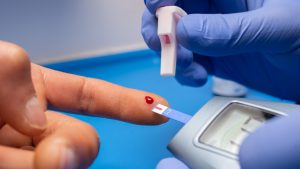As we welcome a new year, it’s the perfect time to set meaningful and achievable goals that promote health, energy, and joy. For individuals managing diabetes, thoughtful planning can make a world of difference in enhancing overall well-being. Here are five key areas to focus on in 2025 to live your healthiest year yet:
1. Know Your Numbers
Understanding and tracking essential health metrics is the cornerstone of proactive diabetes management. This year, commit to regular monitoring and celebrating progress:
Blood glucose levels: Keep track of daily readings and look for patterns to adjust your routine.
HbA1c goals: Partner with your healthcare provider to maintain an optimal range.
Other key indicators: Keep an eye on blood pressure, cholesterol, and weight to support overall metabolic health.
Actionable Tip: Use a digital health app to log your numbers and set reminders for regular check-ups.
2. Make Plant-Based Eating a Celebration
A vegan diet offers incredible benefits for managing diabetes while supporting the planet. This year, explore the vibrant world of plant-based meals:
Focus on whole foods: Incorporate a variety of colorful vegetables, legumes, whole grains, and healthy fats like avocado and nuts.
Experiment in the kitchen: Try new recipes like hearty lentil soups, grain bowls with tahini dressing, or banana-based nice cream for dessert.
Actionable Tip: Plan weekly meal preps to stay consistent and make healthy choices convenient.
3. Stay Active with Joyful Movement
Exercise is more than a health necessity—it’s a source of energy and positivity. This year, prioritize activities you love:
Daily walks: A brisk walk after meals can help regulate blood sugar levels.
Stretching and yoga: Gentle movements improve flexibility and reduce stress.
Try something new: Dance, swim, or explore hiking trails to keep things exciting.
Actionable Tip: Set a goal for 150 minutes of activity per week and track your progress with a fitness app or wearable.
4. Prioritize Restorative Sleep
Good sleep is essential for balancing hormones and supporting glucose regulation. This year, make restful nights a priority:
Set a routine: Go to bed and wake up at the same time daily.
Create a calming environment: Keep your bedroom cool, dark, and free of screens.
Relax before bed: Practice mindfulness or read a calming book to wind down.
Actionable Tip: Use a sleep tracker to understand your patterns and make small adjustments for better rest.
5. Build a Strong Support System
Health thrives in a community. Surround yourself with people and resources that uplift and inspire you:
Join a group: Connect with others managing diabetes through online communities or local meetups.
Partner with a coach: Work with a professional who understands your goals and offers personalized strategies.
Share your journey: Invite friends or family to join your wellness goals, such as trying new recipes or walking together.
Actionable Tip: Make a list of your go-to resources for motivation, from inspiring books to supportive apps.

Type 2 Diabetes: Is It Really Reversible?
A recent National Geographic article [link] explores how type 2 diabetes could be reversible with the right approaches. This condition, which affects millions of people worldwide, has long been considered a chronic and progressive disease. However, recent research challenges this perception and suggests that with lifestyle changes and the right approach, remission is possible. The

How Do GLP-1 Drugs Compare? A Breakdown of Ozempic, Mounjaro, and Trulicity
GLP-1 receptor agonists have revolutionized diabetes management, with drugs like Ozempic, Mounjaro, and Trulicity leading the market. But how do these medications compare in terms of effectiveness, side effects, and patient outcomes? Let’s explore their differences and what they mean for diabetes patients. Understanding GLP-1 Medications GLP-1 receptor agonists mimic a natural hormone that helps

Why Has Medicare Spending on Diabetes Medications Skyrocketed in 5 Years?
In the past five years, Medicare spending on diabetes medications has increased nearly fivefold, reaching $35.8 billion in 2023. This surge has been primarily driven by the growing use of GLP-1 drugs such as Ozempic, Mounjaro, and Trulicity. But what is behind this cost escalation, and how does it affect patients and the U.S. healthcare

The Gut Microbiota and Blood Sugar Control: A Hidden Connection
The human gut is home to trillions of bacteria that play a crucial role in digestion, immune function, and even metabolism. Recent research has revealed a fascinating link between the gut microbiota and blood sugar regulation, shedding light on how the balance of microbes in our intestines can influence diabetes risk and overall metabolic health.

The Dawn Phenomenon: Why Blood Sugar Rises While You Sleep
For many people with diabetes, waking up with high blood sugar levels can be frustrating—especially if they didn’t eat anything overnight. This early-morning spike in blood glucose is known as the Dawn Phenomenon, and it happens due to natural hormonal changes in the body. But why does it occur, and how can it be managed?

The Influence of Red Light on Blood: Can It Improve Diabetes?
Type 2 diabetes is a metabolic disease characterized by insulin resistance and elevated blood glucose levels. In the search for complementary alternatives to improve glycemic control, red light therapy has gained attention due to its potential to enhance circulation, reduce inflammation, and optimize cellular function. But what does science say about it? ✨ What is

